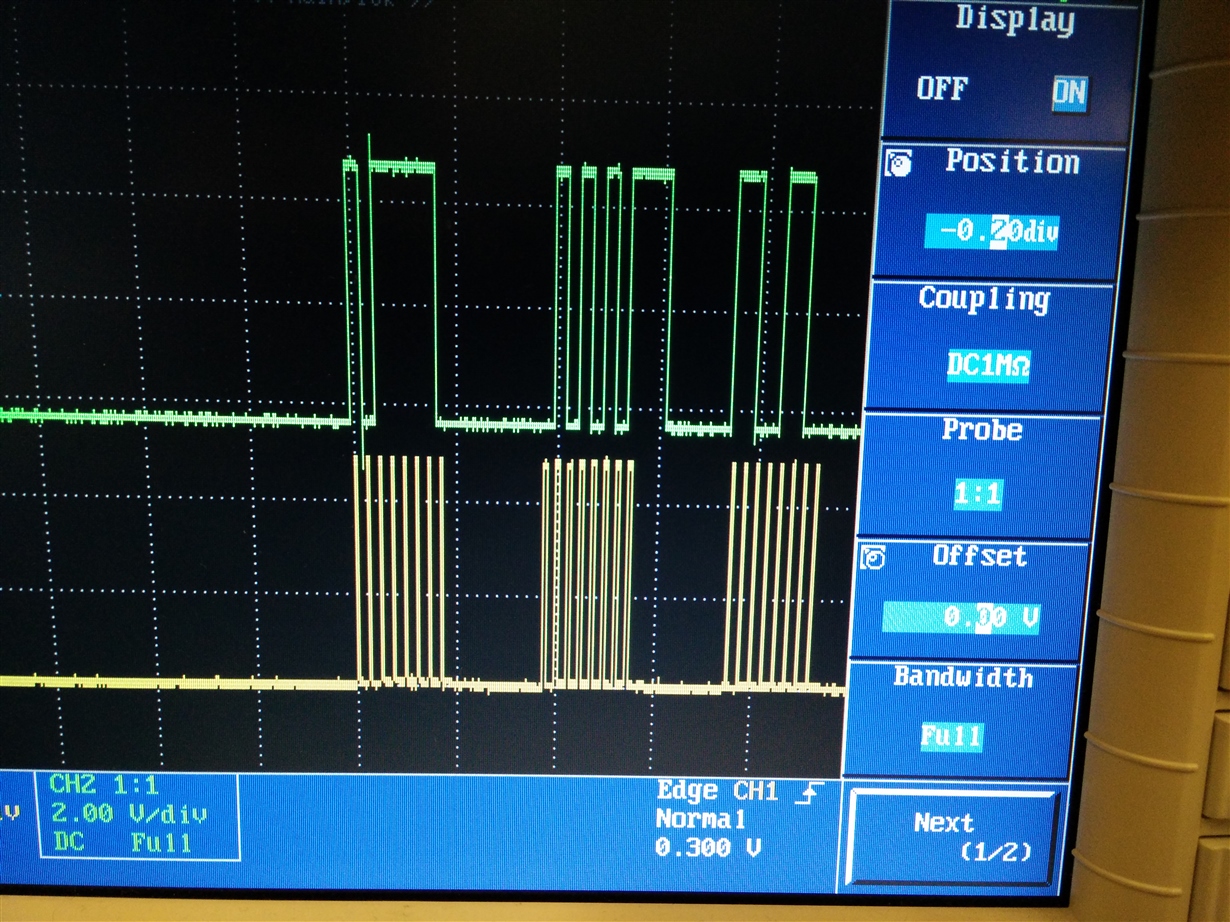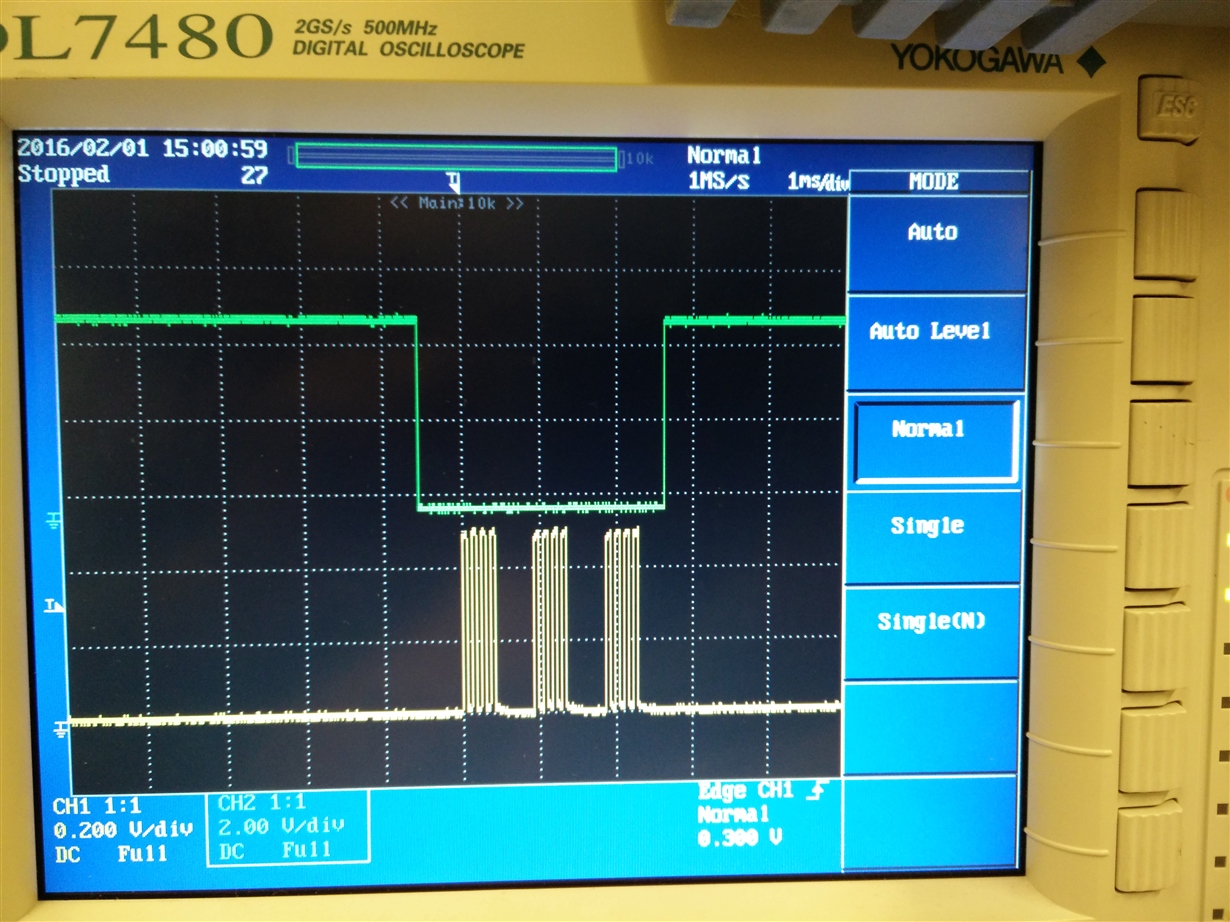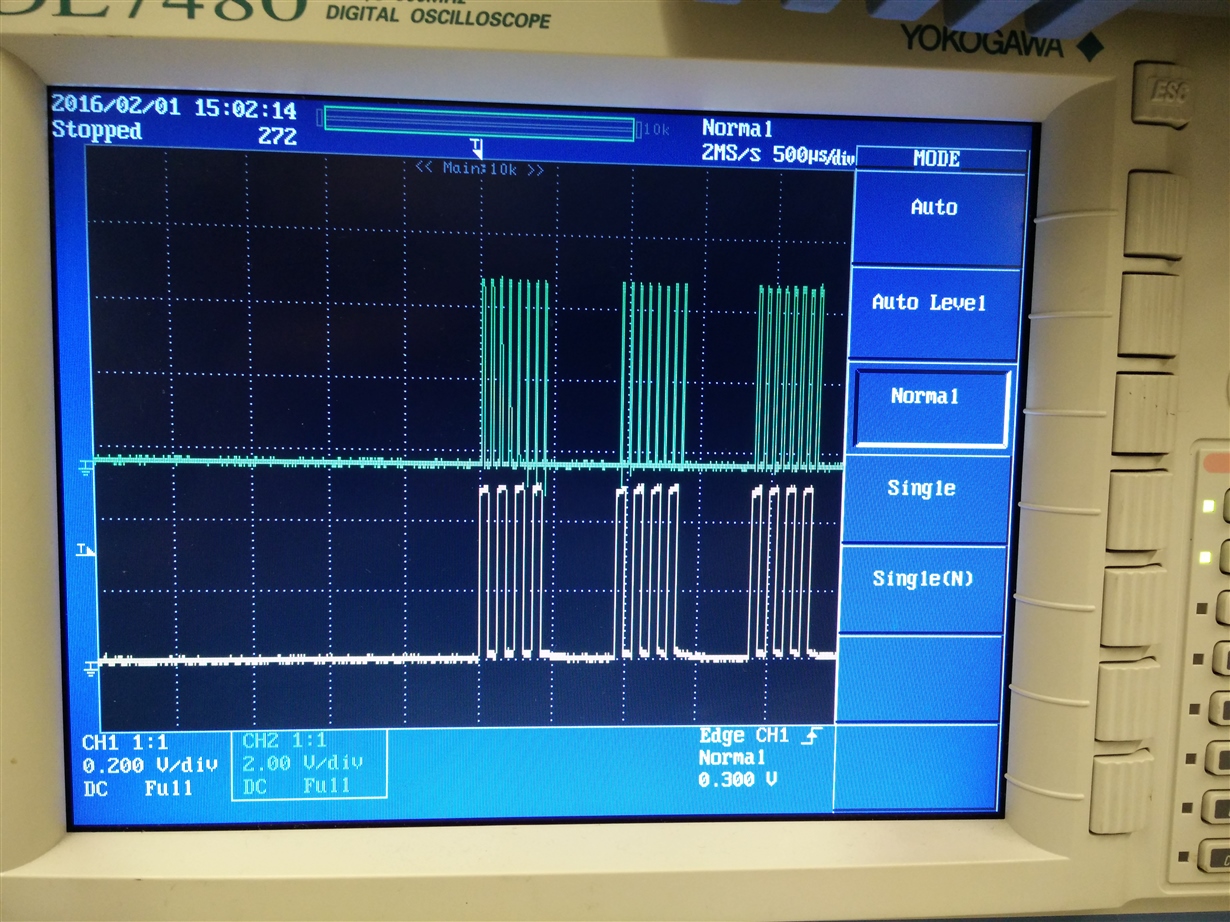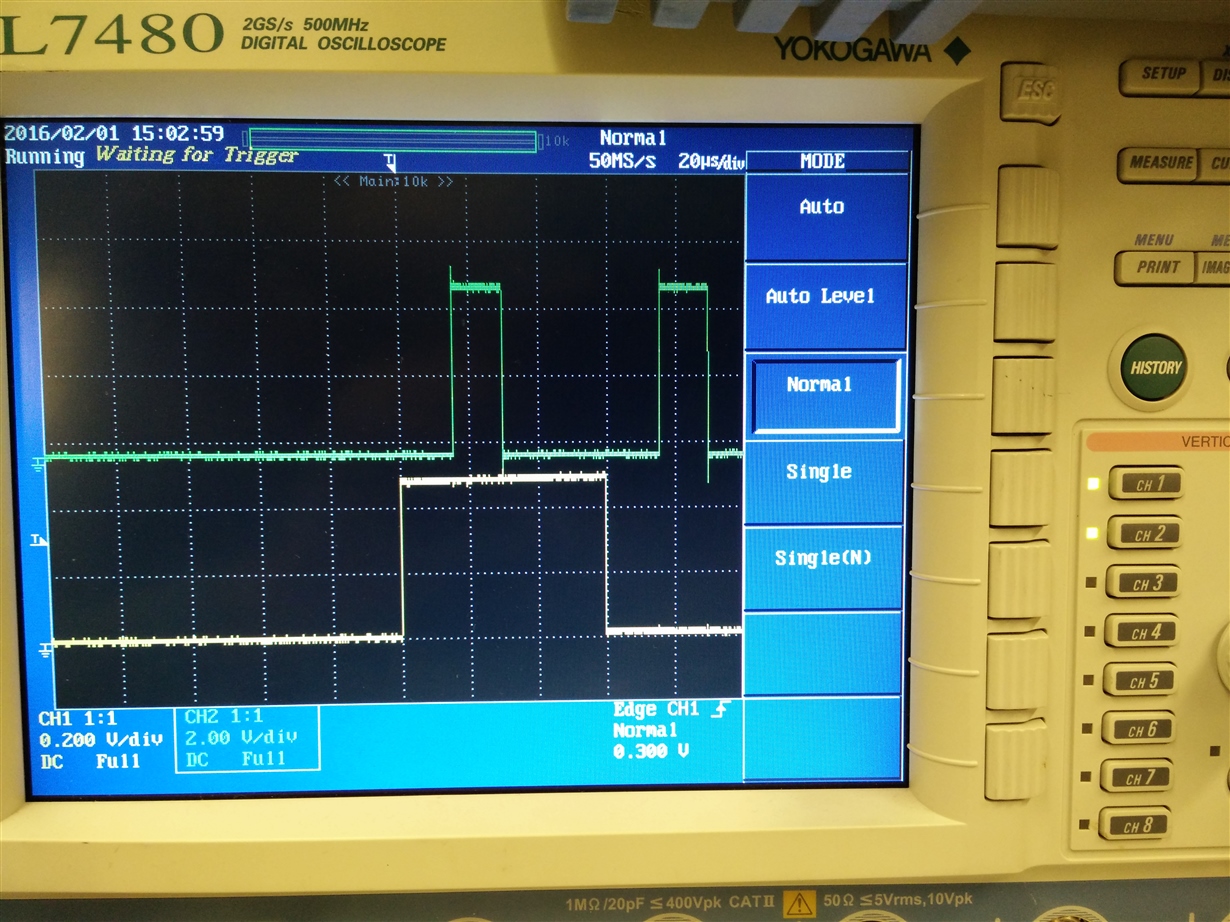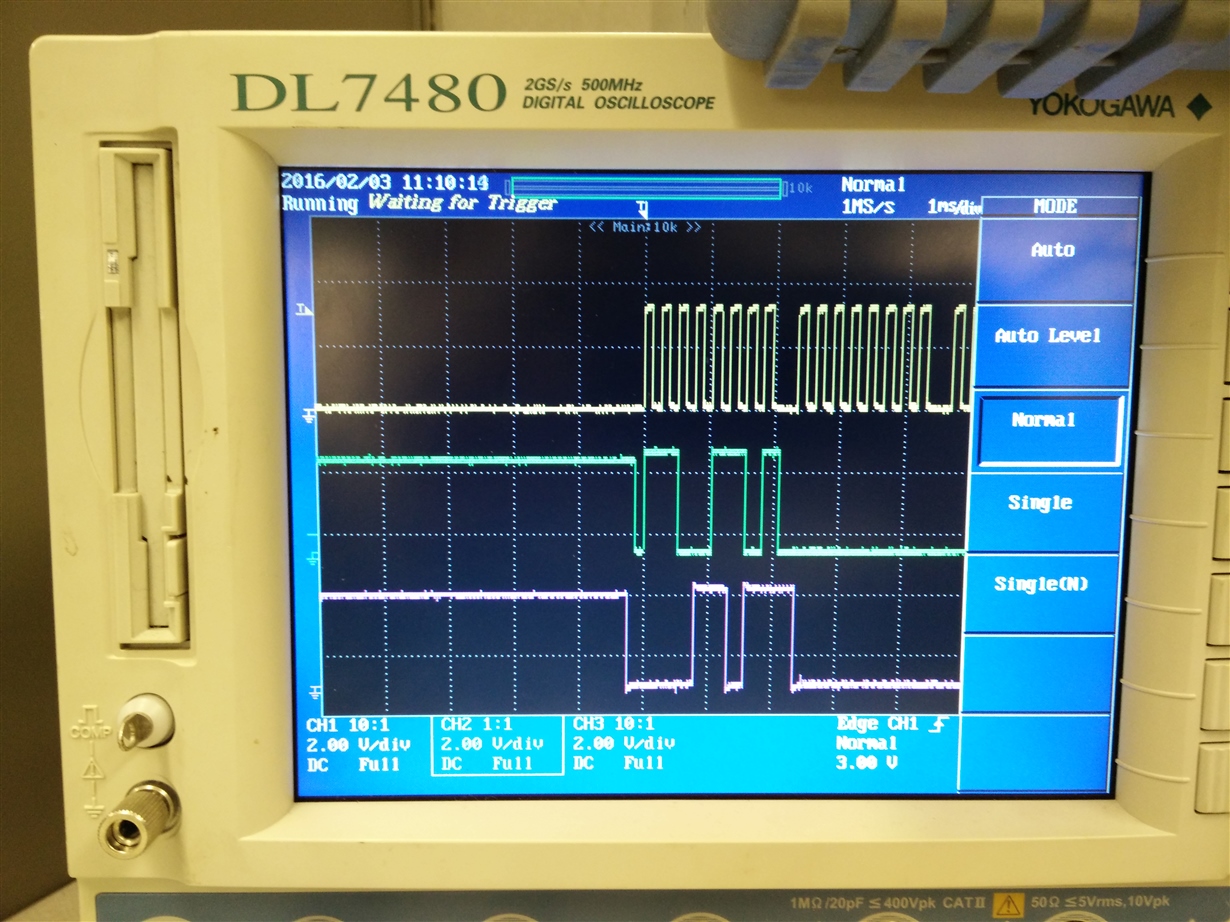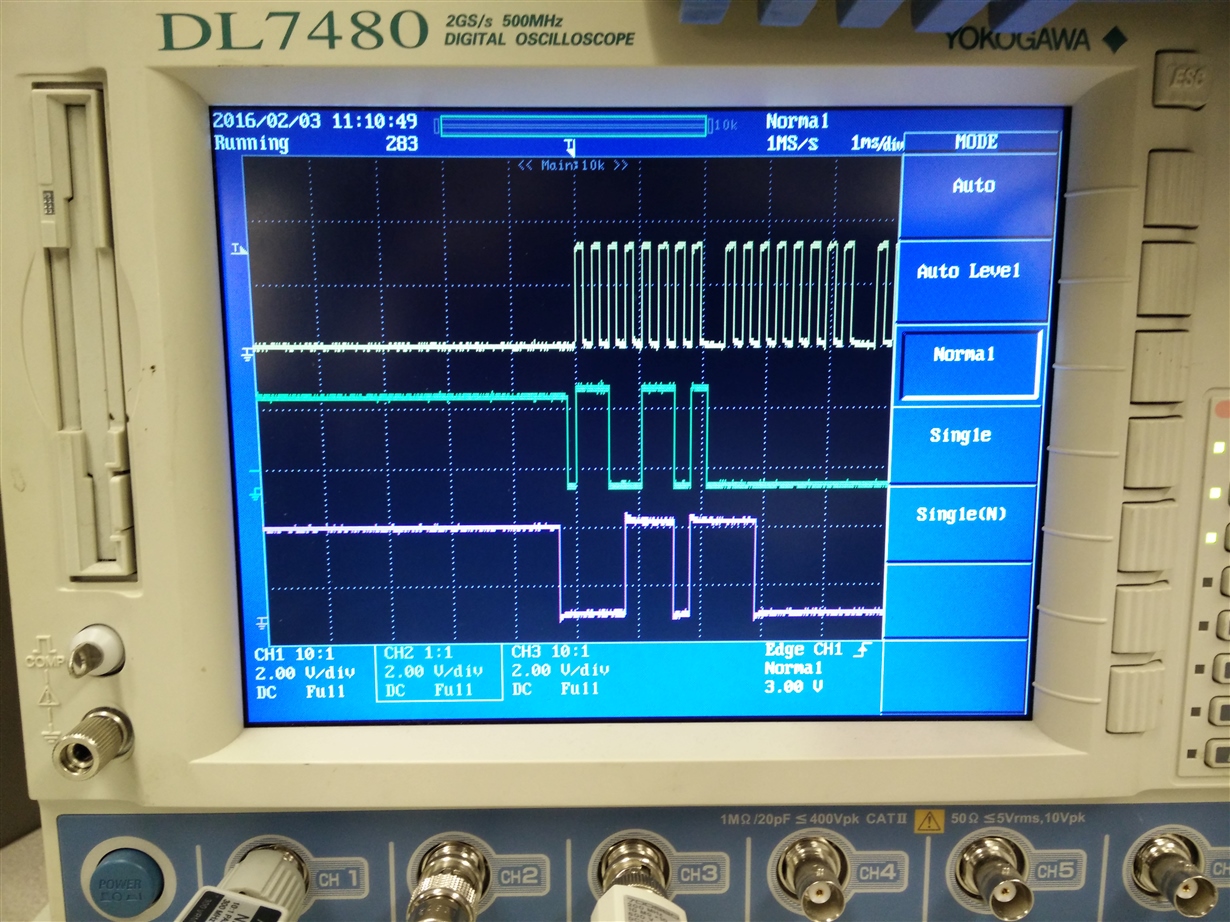Hello TI Team,
I am using a controller that cannot send all 24 bits together over SPI but 8 bits 3 times. Does AMC7812 support it?
Attached a screenshot of DSO.
I am trying like this for quite long time now but get random data from AMC7812.
Thanks
Vitthal


